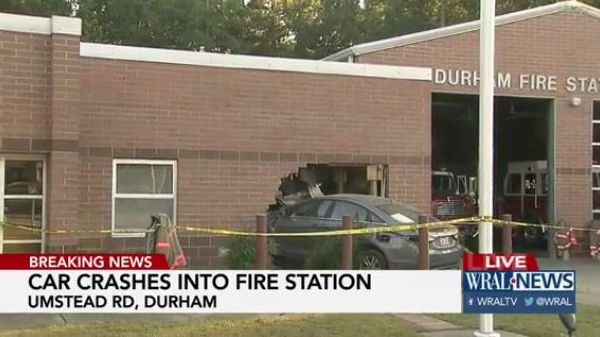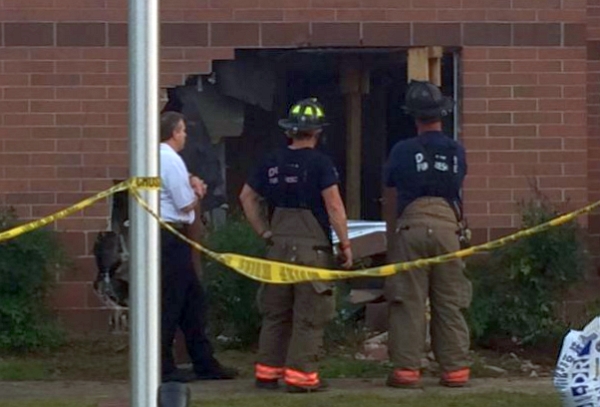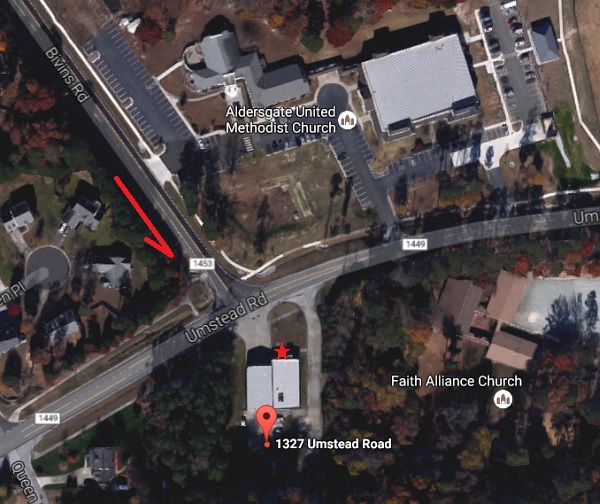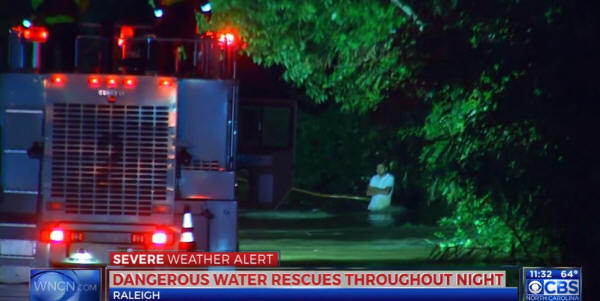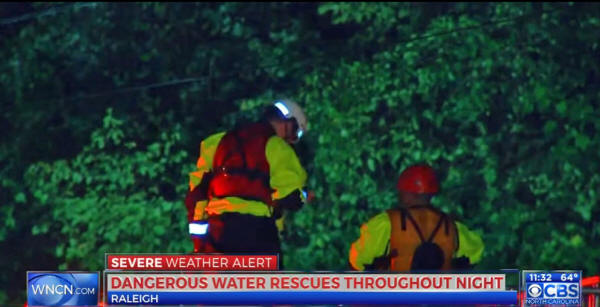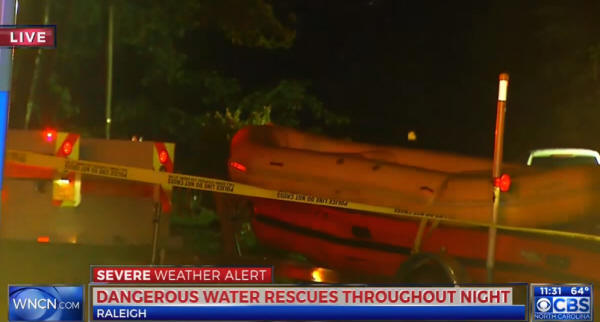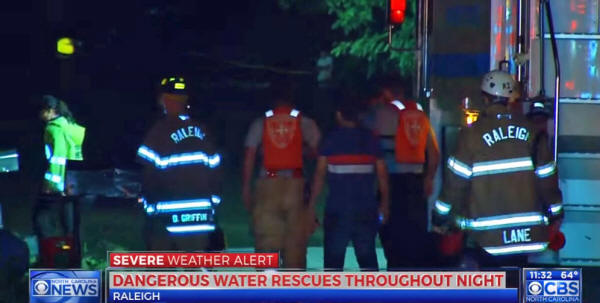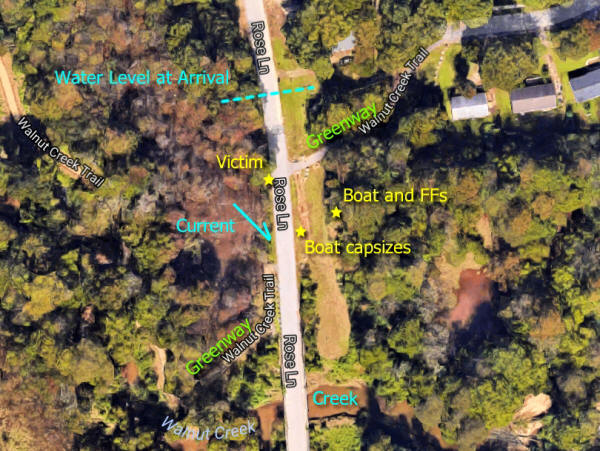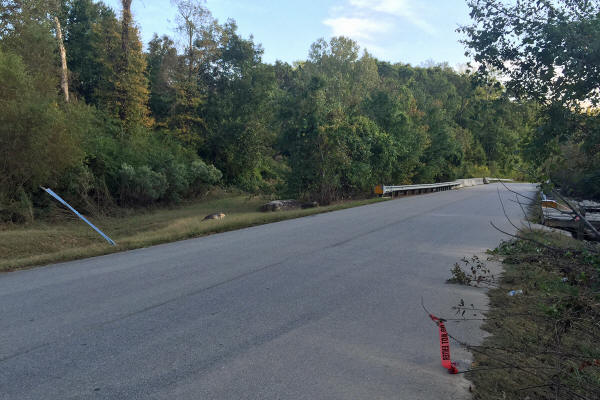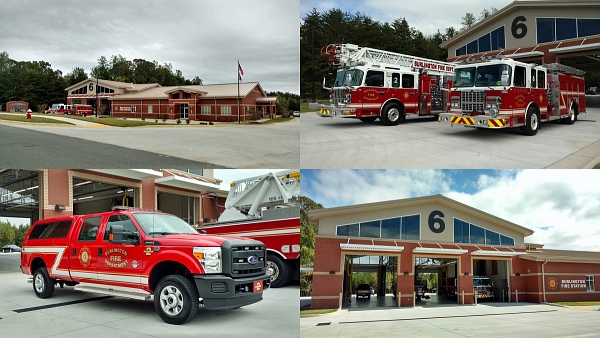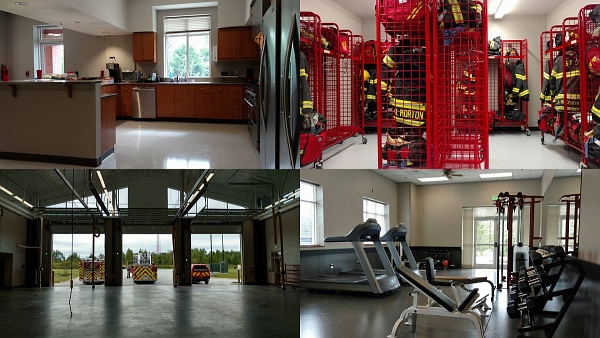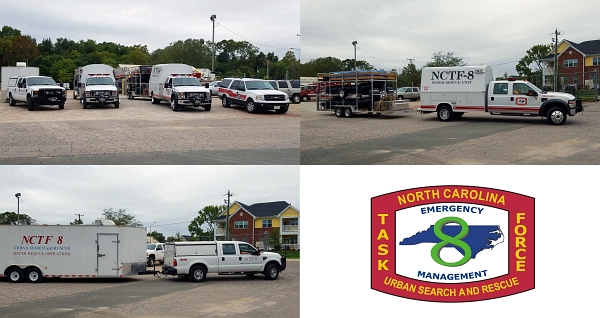Contents
- Part I – Hurricane Matthew
- Part II – Old Stage Road
- Part III – Rose Lane
- Part IV – Numbers
- Part V – Wake County Water Rescues
- Part VI – Sources
Part I – Hurricane Matthew
On Saturday, October 8, heavy rain and winds pelted Raleigh and Wake County as Hurricane Matthew passed along the eastern edge of the state. At the airport, they observed 6.45 inches that day, a new record for that date. Heavy rains started in Raleigh after 10:30 a.m. and continued until about 6:00 p.m. The wind started rising in the 8:00 a.m. hour and continued strong until about midnight. Max speed was 32 mph, with gusts of 47 mph.
During that twenty-four hour period (0800 to 0800 hours), the fire department answered 437 calls. The peak volume was around 3:00 p.m., though the call volume stayed strong for a number of hours. There was widespread flooding through the city, and numerous calls for assistance from drivers who stranded themselves. Or from those who spotted cars in flood waters, and were unsure if they were occupied.
(Yours Truly was in Emmitsburg all weekend, and thus no photos from him.)
Thirty Water Rescue Calls
Raleigh Fire Department units answered 30 water rescue calls, and rescued or removed at least 21 people. That included three responses into the county, and whose departments answered another double-dozen such calls. Raleigh also contributed personnel and equipment for NC USAR Task Force 8 (swift water rescue teams deployed to eastern North Carolina) and NC Haz-Mat RRT 44 (decon unit deployed to Kinston); and helicopter rescue technicians for NCHART missions.
On Saturday, Raleigh’s two squad companies were expanded into two-piece companies, each operating their mini-pumper and boat trailer as a separate unit. Mini 2 was staffed with four firefighters from Squad 7, and Mini 3 was staffed with two from Squad 14. Each squad was then filled from Engine 17 and Ladder 3, also Special Operations Command companies. (Raleigh’s water rescue unit, USAR 801, was out of the city, deployed as part of Task Force 8.)
Mini 2 and Mini 3 responded exclusively to water rescue calls, though were often cancelled en route, as engine and ladder companies handled the incidents. Or as crews found subjects already out of vehicles, or already evacuated to dry land.
The locations of the calls including many of the usual suspects:
- Anderson & Oxford
- Atlantic & Hodges
- Bailey Drive, 500 block
- Calumet Drive, 3200 block – Flooded apartments
- Claremont Road, 2900 block
- Garner Road, 1800 block
- Glenwood & Creedmoor
- Gorman & Avent Ferry
- Hawes Court, 700 block – Flooded apartments
- Lake Wheeler & I-440
- Lake Woodard & Timberlake
|
- Lumley & Brier Creek
- Rose Lane & Maplewood
- S. Saunders Street, 2300 block
- Southgate & Proctor
- Sunnybrook & Middle Branch
- Wade Avenue & I-40
- Wake Forest & Hodges
- Wake Forest & McNeil
- Wake Town Drive, 1000 block
- Wilmington & City Farm
|
Plus three calls in the county, where Raleigh also responded:
- Barwell & Shirley with Eastern Wake
- Old Stage & Eric with Garner
- NC 97 & Little River with Wendell and Zebulon.
Some of the Stories
On Gorman Street near Avent Ferry Road [dispatched 4:57 p.m.], Engine 20 and Ladder 7 rescued a Wake County sheriff’s deputy from a flooded patrol car. They deployed their ladder, which they used to reach the victim, and then walked the subject out of the water. On Hawes Court [dispatched 5:30 p.m.], Engine 6 arrived and found chest-high water at a two-story apartment building, with several people stranded inside. Ladder 2, Rescue 1, and Mini 2 floated out nine people, three cats, and two dogs.
Raleigh police reported a woman trapped in a tree by Walnut Creek, along the Walnut Creek Trail in southeast Raleigh. Engine 20 and Ladder 2 responded, dispatched to 1100 Sunnybrook Road at 8:00 p.m., and rescued the woman. She was not injured. In the 2400 block of Wake Forest Road [dispatched 12:14 a.m. on Sunday], Mini 2 removed a person stranded by flood waters. He had attempted to cross the flooded road, was caught in the current, and came ashore beside a business. Crews paddled in their raft from McNeil street.
Also early Sunday morning, Raleigh (E26, B2, M2) and Eastern Wake units (P4, P2, C1, Boat 1) responded to Barwell Road and Shirley Street [dispatched 1:07 a.m.]. A woman drove her vehicle past barricades, spun entirely around, and was washed downstream. The call was reported by Wake SO. Arriving units found her standing on a tree limb and hanging onto branches above her head. Raleigh arrived ahead of Eastern Wake, and began rescue operations. Mini 2 pulled up to the water’s edge, attached a rope to the front of the mini-pumper, attached the rope to their raft, and rescued the woman. She was not injured.
Later Sunday morning [dispatched 6:56 p.m.], Zebulon and Wendell fire departments responded to NC 97 and Little River, for a vehicle in flood waters. They found a woman stranded atop her car about 50 to 75 yards from the edge of water, and about 25 yards off the road. Similar to the Rose Lane call, the water on the roadway was smooth, but became turbulent passing over a guardrail.
Raleigh was requested for swift water assistance, and Squad 7 and Mini 2 responded. ZFD walked into the water and floated a lift vest to the victim. RFD deployed a raft and used a rope and pulley system to perform the rescue. It was also broadcast live by a WRAL news helicopter, which was overhead.
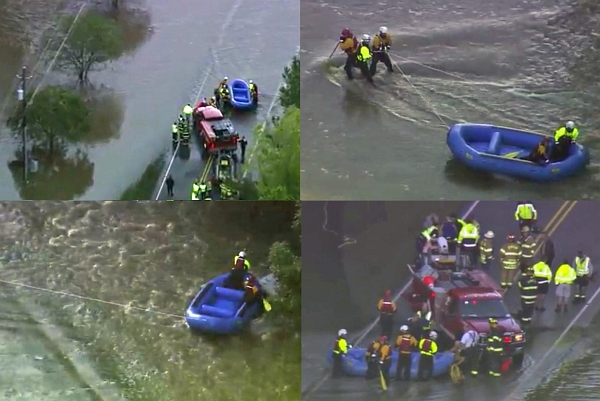 WRAL
WRAL
Rescuers Required Rescue
Two of the incidents resulted in the rescuers becoming stranded. Squad 7 and Mini 2 were assisting the Garner Fire Department on Old Stage Road, and had completed the rescue of three occupants of a vehicle, when their boat became stuck against a tree. The four-hour incident brought a water rescue team from the Apex Fire Department to assist.
About a half-hour later, members of Squad 14–who were operating Mini 3–became stranded when their rescue boat struck a sign. They were operating on Rose Lane, attempting to rescue a male subject standing on a tree above flood waters. The seven-hour operation brought mutual aid assets from the airport fire department (!), Chapel Hill Fire Department and South Orange Rescue Squad, and the Apex Fire Department, after they cleared from Garner.
Part II – Old Stage Road
At 6:10 p.m., the Garner Fire Department was dispatched to a stranded vehicle at Old Stage Road at Eric Street. Engine 2, Rescue 1, and Battalion 3 (off-duty Battalion Chief) responded. Three adult males in a pick-up truck, in high water just north of intersection. After their own rescue attempts, Garner requested Raleigh for assistance. Squad 7 and Mini 3 were dispatched at 6:57 p.m.
They arrived at 7:32 p.m., and found three people sitting on the roof of the submerged vehicle. The water was at mid-window level, and they were about 150 to 200 yards from safe ground. The water in the creek was moving slowly, but gained speed in the roadway, and then grew turbulent after cresting over the guard rail and into the ditch.
Mini 2 was staffed with four people. They deployed their boat (Zodiac-style, 30HP motor), with three firefighters aboard. Took just a couple minutes to reach the victims–who were wearing suits, as they were headed to a wedding!–and transport them to the far side of the flooded road. The firefighters turned out, and headed back. Within a minute, the boat was caught in a turbulent spot or small wave. The back of the boat was jerked down, and the bow was lifted. It started floating backwards, and became pinned perpendicular against a tree.
The firefighter operating the motor had it throttled wide open, to keep the boat in its position, and from moving with the current. The three assessed their situation. Going with the flow wasn’t an option, as the current would take them into dangerous ground with “strainers and sweepers.” Instead, they attempted to move forward. While trying that action, the boat hit a tree. It became wedged against the tree, and half of the boat sank. The boat rested at about a 45 degree angle, the bow upward, and the water about halfway up the boat. The three firefighters were stranded at the boat, against the tree.
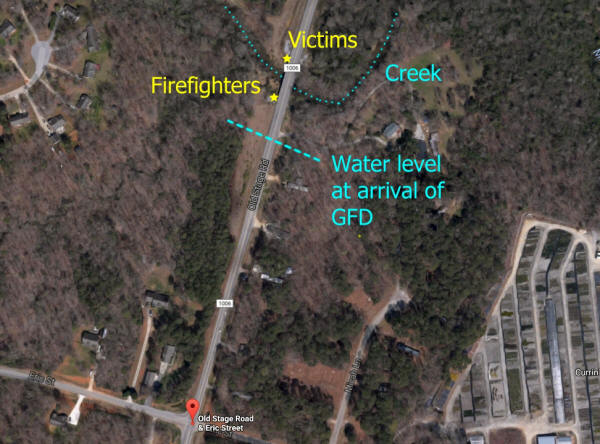
Though their loose items were lost–ropes, floats, paddles, etc.–the firefighters had their radios and flashlights attached to their PPE. They had contact with shore, and advised that they were stranded but injured. Command communicated that their firefighters were stranded about 7:45 p.m.
Another water rescue team was requested. Raleigh’s other water team was on Rose Lane, and had become stranded themselves. The Apex Fire Department was subsequently dispatched at 7:57 p.m. They responded with Rescue 1, Rescue 2, and Boat 2.
Apex arrived at 9:18 p.m. They deployed a boat with three firefighters, and tried to back into the location of stranded firefighters. They struck the same spot that caught the Raleigh boat. They had a more powerful boat motor (55HP versus 30HP) and were able to get away. The Apex boat’s efforts also generated some waves that uprighted the Raleigh boat. The Apex team discontinued that rescue attempt, as they couldn’t safely “park” their boat beside the Raleigh boat for rescue.
Meanwhile, the Raleigh firefighters moved their position. Their boat was now floating, and they moved into a more stable area, an eddy. The Apex team began a second attempt. With their boat they extended a 600 foot line close to the Raleigh boat. Then they tossed a throw bag with a rope, and used the current to float the bag to the location of the Raleigh crew.
The Raleigh firefighters attached the bag line to the main line, and slowly worked the boat out of its position, maneuvering around trees. A mechanical advantage was used on the line, and attached to the front of the mini-pumper. Once the nose of the boat was through the trees, the system was reset for maximum pull, and the boat was pulled to safety faster. The second and successful operation took 25 to 30 minutes to complete.
Though EMS was also on scene, the three firefighters didn’t require any examination or treatment. They returned to Raleigh, and later returned to service, though without their boat. The motor was damaged. They used their raft for the remaining rescue calls that they responded to.
Run Card
- GFD – E2, R1, B3 (off-duty Battalion Chief).
- RFD Sq7 and M2 + boat trailer (M2 with four FFs)
- AFD R1, R2 + trailer w/Boat 1
Times
| 06:10 p.m. |
Dispatched for GFD |
| 06:57 p.m. |
Dispatched for RFD |
| 07:32 p.m. |
RFD arrived |
| 07:40 p.m., about |
RFD rescues victims (three males on car in water) |
| 07:40 p.m., about |
RFD gets stranded* |
| 07:57 p.m. |
AFD dispatched |
| 08:18 p.m. |
AFD arrives |
| 09:30 p.m., about |
RFD rescued |
| 10:27 p.m. |
GFD cleared |
| 03:00 a.m. |
RFD Squad 7, Mini 3 back in service |
*RFD on Rose Lane got stranded at 7:35 p.m., for those noting that these happened about the same time. AFD subsequently responded to that incident, after clearing this one.
At 6:58 p.m., Engine 12 and Ladder 8 were dispatched to Rose Lane and Maplewood Lane. That’s the dead end, just south of the bridge over Walnut Creek. Reported as a male subject hanging onto a tree branch in the middle of the creek. Mini 2 heard the call, and added themselves. They were on Western Boulevard near Pullen.
Engine 12 and EMS Chief 101 were first on scene. They approached the end of Rose Lane from the north, and found the roadway was flooded at the creek. The victim was on the east side of the flooded road, above moving water that appeared waist deep. He was about 75 yards from the edge of the water. Engine 10 also arrived, having responded to another and apparent duplicate call at their location. They cancelled Ladder 8.
They later learned that the victim had been out walking, and no vehicle was involved. They also later determined that the middle of the flooded area contained a band of fast-moving current, which would impact rescue efforts.
The two firefighters from Mini 3 donned their PPE and PFD, and attempted to reach the victim on foot, with a shallow water cross. They got about halfway, but the current was too strong. They then deployed their powered boat, another Zodiac-style craft with a 30 HP motor. They headed toward the victim, on the right side of the flooded road, and hugging the tree line, which was close to the edge of the road.
With the current moving in a diagonal direction forward and left, the boat was pulled away from the victim. It started rotating right, with the bow pointing toward the victim, as the boat floated toward the opposite side of the flooded road. The crews later realized that the motor wasn’t strong enough to beat the current. Just as they floated past the victim, the boat struck a submerged traffic sign. The boat was impacted on its port (left) side, and “rode up the sign” at about a 60 degree angle.
The two firefighters were spilled into the water. The time of capsize was 7:35 p.m. Command immediately requested additional rescue resources, and Engine 3, Ladder 8, Rescue 1, and Battalion 2 were dispatched. Two additional EMS units were also added to the call.
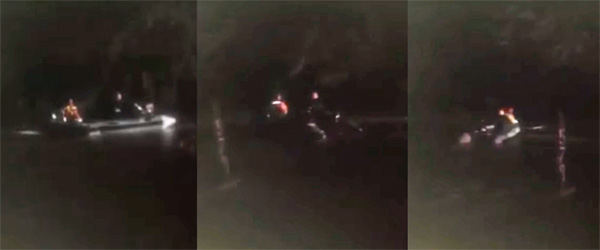
WNCN / Eric Dillard video stills showing the boat being rotated by the current
After spilling into the water, the two firefighters grabbed onto their boat. With their boat, they floated into the nearby tree, and became lodged in the trees. Vines also entangled the boat, and prevented any more movement with the current. The two firefighters were lodged against the trees, and with the boat beside them. They pulled a rope from the boat, and tied the craft to the tree. One firefighter then “bear hugged” the tree, and was used as a ladder by the other, to climb into the boat beside them. He pulled the first firefighter into the boat.
Once in the boat, they determined that they were uninjured. However, they couldn’t really see any of the fire units or their activities. They would observe other firefighters trying to reach them on foot, walking around their location, and trying to approach from the back side.
About this time, Battalion 2 arrived at 7:50 p.m., along with the Assistant Chief of Training (Car 5). By 8:30 p.m., they were joined by the USAR and Special Operations Command leader (Car 5) and Special Operations Command company Ladder 3. The latter was en route to the shop, with a nail in the tire. They were diverted to the scene.
Rescue 1 and the others discussed their options to rescue the two firefighters. They rejected a four-person “diamond pattern” approach, as the current was too strong. They then tried to access by foot through the wooded area, but the current was again too strong.
Meanwhile, EMS Chief 101 contacted the Wake County Emergency Operations Center (EOC), to request a high-profile vehicle from the NC Air National Guard. The closest asset was three hours away. Instead, a crash truck from the airport was requested, along with Chapel Hill’s Tac 52, a five-ton former military transport.
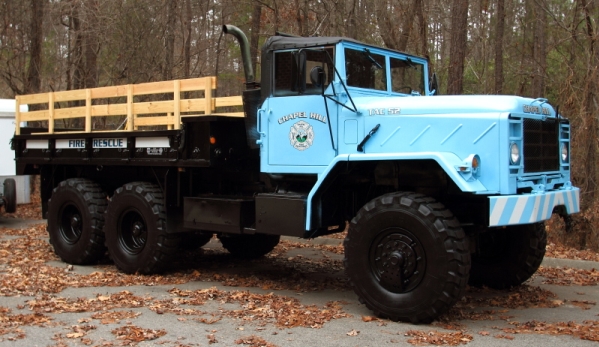
Chapel Hill Fire Department – Tac 52 in January 2015
Command inquired about a helicopter, but the NCHART assets were not flying due to the wind. They also learned that Raleigh’s other water team (on Mini 2) was also unavailable, as their members were also stranded Old Stage Road in Garner. They then requested swift water rescue teams from Chapel Hill and Apex.
While command was considering their options for next steps, Battalion 2 requested relief for Engines 12 and 10. Crews from both had been in the water, and needed to dry out. Engine 5 and Ladder 6 were dispatched, at 8:42 p.m. and 8:47 p.m., respectively. The two engines cleared about 9:00 p.m. Engine 5 arrived at 8:55 p.m., and Ladder 6 arrived at 9:12 p.m.
About the same time, say around 9:00 p.m., the crash truck from the airport arrived. CFR 2, an Oshkosh T-1500 4×4, was driven into the water, toward the original victim. The water was still too deep, and its progress was stopped about halfway. The Chapel Hill truck arrived about this time. With the water too deep for vehicle approaches, they discussed next steps. The stranded firefighters, meanwhile, had communicated that they were safe and secure, and recommended focusing rescue efforts on the original victim.
WNCN video stills showing CFR 2 at the water’s edge, along with personnel atop the vehicle
They then directed Ladder 6, which had just arrived, to back down to the water’s edge. The 105-foot aerial ladder was extended, and a rope bag was repeatedly tossed toward the victim. But it kept falling about 20 feet short. After about 45 minutes of trying this technique, they repositioned the ladder. The water was receding, and the ladder was lowered back to the bed, and the truck was moved closer to the victim. On the second set of attempts, the rope bag reached the victim. He was pulled to the tip of the ladder, and removed.
He was rescued and taken to awaiting EMS crews, where he was placed on a stretcher just before 11:00 p.m., noted a news story. He was transported to WakeMed.
EMS resources on scene by this time were EMS 31, EMS 38, EMS 63, EMS 19 (four ambulances), District 9, Chief 101, MD 1 (Medical Director). Two additional Assistant Fire Chiefs had also arrived, Car 2 (Operations) and Car (Services). By this time, the water rescue teams from Apex and Chapel Hill had arrived. The latter were comprised of Chapel Hill Fire Department and South Orange Rescue Squad members. (The two agencies each had members deployed or responding elsewhere, and they combined their remaining personnel and equipment into a single entity.)
The crews resumed their attempts to rescue the two firefighters. They tried again to reach them on foot, by entering the water and going through the woods. The trees and brush were too thick for a four-person patten, and the rescuers had to deploy individually. The current was again still too strong. They made two tries and then pulled out.
Their next and final attempt used a “high line” to pull the stranded boat to safety. They ran a rope line down to the stranded firefighters, parallel to the flooded road, on the victim s side, and tied the rope to a tree and the bridge. They added a mechanical advantage, to provide pulling power. Five rescuers entered the water, using a diamond pattern, and hooked into the guard rail. They then sent a float with rope down to the boat, which was used to pull the boat to safety.
The boat easily came free, and was soon being walked out, with the two firefighters at its side. The two later determined that they had been stranded in deeper water, as their location was below the grade of the road. After being stranded, they were in about 12 feet of water. When rescued, the level had dropped to about eight feet.
EMS checked the two firefighters. After being rescued, they realized they were cold and despite their dry suits. Their core temperatures were tested and found low. They were warmed with blankets. Mini 3 was removed from service, and they returned to Station 14, to tend to their equipment and recuperate. They didn t answer any more calls that night.
Site of the rescue on Friday afternoon. Victim was located on the lower right, at the red tape. The boat capsized after striking the sign on the left. The boat and the firefighters floated left, out of the picture’s frame.
- RFD E12, E10, E5, E13, L8, L3, L6, B2, M3 + boat trailer (staffed by Squad 14 members x 2), Car 51 (USAR/tech. rescue commander), Car 2, 4, 5
- EMS EMS 31, EMS 38, EMS 63, EMS 19, D9, Chief 101, MD 1
- RDU CFR 2
- CHFD Tac 52
- Chapel Hill water rescue team, comprised of combined CHFD and South Orange Rescue Squad resources
- AFD R1, R2 + Boat 2
| 6:58 p.m. |
E12, L8 dispatched, Rose Lane & Maplewood |
| 6:57 p.m. |
M3 added |
| ? |
M3 arrives |
| ? |
E10 arrived. Was already in area for another call. Stayed to help. |
| 7:30 p.m., about |
Boat deployed |
| 7:35 p.m. |
Boat capsizes |
| 7:36 p.m. |
E3, L8, R1, B2 dispatched, 759 Rose Lane |
| 7:42 p.m. |
E3, R1 arrived |
| 7:43 p.m. |
L8 arrived |
| 7:50 p.m. |
B2 arrived |
| 8:17 p.m. |
Car 51 dispatched |
| 8:23 p.m. |
CFR 2 dispatched |
| 8:29 p.m. |
Car 51 arrived |
| 8:30 p.m. |
L3 arrived, added to call, while en route to shop. |
| 8:42 p.m. |
E5 dispatched, relief for E12 and E10. |
| 8:47 p.m. |
L6 dispatched, relief for E12 and E10. |
| 8:55 p.m. |
E5 arrived |
| 9:00 p.m., around |
E12, E10 cleared |
| 9:00 p.m., maybe |
CFR 2 arrived |
| 9:12 p.m. |
L6 arrived |
| 9:15 p.m. |
CHFD Tac 52 leaves Chapel Hill. |
| 10:30 p.m. |
CHFD/OCRS swift water team leaves Chapel Hill. |
| 10:48 p.m. |
Apex swift water team dispatched, after clearing scene on Old Stage Road with GFD and three stranded RFD firefighters. |
| 11:00 p.m., just before |
Victim rescued |
| 11:28 p.m. |
CFR 2 cleared |
| 11:30-11:45 p.m., maybe? |
Chapel Hill and Apex teams arrived |
| 11:53 p.m. |
E13 dispatched |
| 11:58 p.m. |
E13 arrived |
| 12:02 a.m. |
L3 cleared |
| 12:27 a.m. |
E5 cleared |
| 12:49 a.m. |
E3 cleared |
| 1:43 a.m. |
L8 cleared |
| 2:21 a.m. |
E13 cleared |
| 2:30 a.m. |
R1 cleared |
| 2:32 a.m. |
Car 51 cleared |
| 2:33 a.m. |
E10, L6, M3 cleared |
Part IV – Numbers and Lists
From 0800 hours Saturday until 0800 hours Sunday, the Raleigh Fire Department answered 437 calls. The peak volume was around 3:00 p.m. The incidents included:
- 10 – Working structure fires
- 11 – Trees on or into buildings, including four with occupants trapped or unable to evacuate their structures
- 30 – Water rescue calls, mostly involving vehicles stranded in water. Many required the rescue of occupants.
- 56 – Power lines down.
There were 866 total runs during that period, including these unit totals:
| E1 |
29 |
|
E20 |
31 |
|
R1 |
19 |
| E2 |
30 |
|
E21 |
20 |
|
B1 |
9 |
| E3 |
26 |
|
E22 |
17 |
|
B2 |
14 |
| E4 |
17 |
|
E23 |
6 |
|
B3 |
11 |
| E5 |
29 |
|
E24 |
8 |
|
B4 |
4 |
| E6 |
33 |
|
E25 |
5 |
|
B5 |
18 |
| SQ7 |
29 |
|
E26 |
12 |
|
|
|
| E8 |
29 |
|
E27 |
9 |
|
|
|
| E9 |
33 |
|
E28 |
9 |
|
|
|
| E10 |
20 |
|
E29 |
5 |
|
|
|
| E11 |
30 |
|
L1 |
14 |
|
|
|
| E12 |
33 |
|
L2 |
34 |
|
|
|
| E13 |
19 |
|
L3 |
19 |
|
|
|
| SQ14 |
26 |
|
L4 |
29 |
|
|
|
| E15 |
24 |
|
L5 |
10 |
|
|
|
| E16 |
26 |
|
L6 |
3 |
|
|
|
| E17 |
14 |
|
L7 |
19 |
|
|
|
| E18 |
6 |
|
L8 |
12 |
|
|
|
| E19 |
21 |
|
L9 |
1 |
|
|
|
Part V – Wake County Water Rescues
| District |
Address |
Time |
Notes |
| CFD |
100 Macalyson Court |
11:39 a.m. |
|
| EWFD |
Barwell & Shirley |
9:42 p.m. |
Single vehicle, no rescue needed. Plus RFD.
P4, P2, C1, Boat 1, RFD E26 |
| EWFD |
Barwell & Shirley |
1:07 a.m., Sunday |
Single vehicle, one person rescued. Plus RFD
P4, P2, C1, Boat 1, RFD E26, B2, M2. |
| FFD |
6700 Fayetteville Road |
|
Cars in water. Plus RFD. |
| FFD |
Holly Springs & Penny |
4:19 p.m. |
E1, R1, C2. |
| FFD |
Johnson Pond & Bells Lake |
7:27 p.m. |
|
| FVFD |
9701 Lake Wheeler Road |
|
Cars in flood water, several on top of their vehicles, after driving into water. |
| FVFD |
NC 42 and Mt. Pleasant Roads |
7:25 p.m. |
Car in flood water. Plus CFD Rescue 2 for swift water team. |
| GFD |
Old Stage & Eric |
6:10 p.m. |
Plus RFD, AFD.
See above. |
| FVFD |
Old Stage & Panther Lake |
9:16 p.m. |
Plus AFD. |
| GFD |
7218 Gentle Valley |
9:53 p.m. |
E3, B1. |
| GFD |
NC 42 & Barber Bridge |
3:27 p.m. |
E2, R2. |
| GFD |
NC 42 & Sauls Road |
4:38 p.m. |
|
| GFD |
Old Stage & Vandora Springs |
|
Car in water. |
| GFD |
Old Stage & Eric, reported as Old Stage & Banks |
2:36 a.m., Sunday |
Two subjects hanging on a tree after car was swept away.
E2, R1, B1, +Lewisville FD swift water team. |
| HFD |
4089 Country Club Road,
also as Dukes Lake & Country Club |
4:22 p.m. |
Plus WFD
R9, Boat 22, Wendell R110 |
| HSFD |
Cass Holt & Rex |
3:48 p.m. |
Sq1, B1. |
| HSFD |
Green Oaks & New Hill |
4:58 p.m. |
Car stranded in water, two people rescued. Plus AFD for swift water team. |
| SCFD |
Lake Wheeler and Penny |
|
Cars stuck in flood waters. Plus FFD.
R1, Fairview E3, C1 |
| WFD |
NC 97 at Little River |
6:56 a.m. |
One vehicle in water, one person rescued by boat. Plus ZFD, RFD. |
| WFFD |
Harris & West Oak |
6:21 p.m. |
|
| ZFD |
US 64 & Arendell |
3:35 p.m. |
Cars stuck in high flood water.
P91, R9, C1. |
| ZFD |
US 64 & US 264 |
5:01 p.m. |
P92, C2. |
| ZFD |
W. Gannon & Water Plant |
~12:09 a.m., Sunday |
P91, R9, C1 |
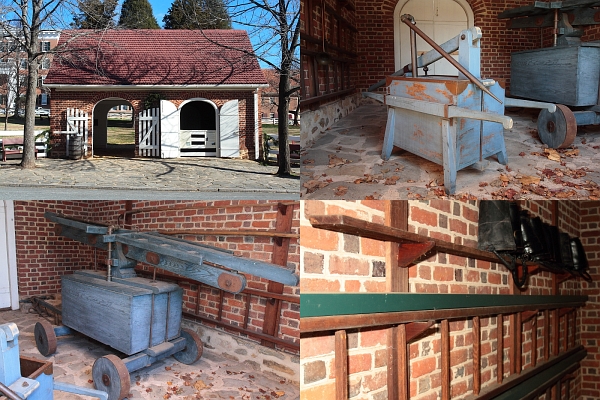
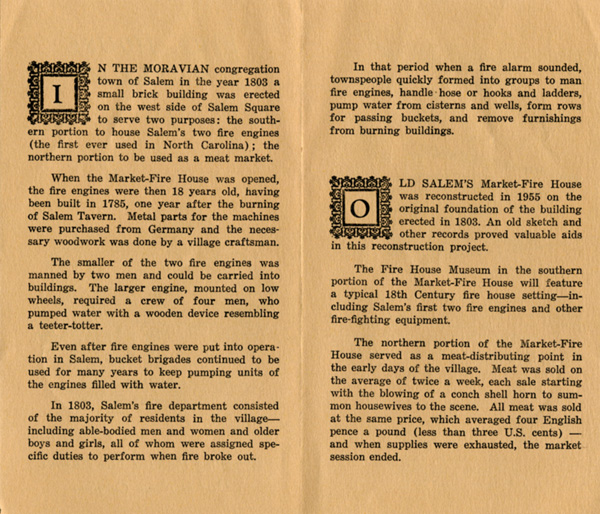
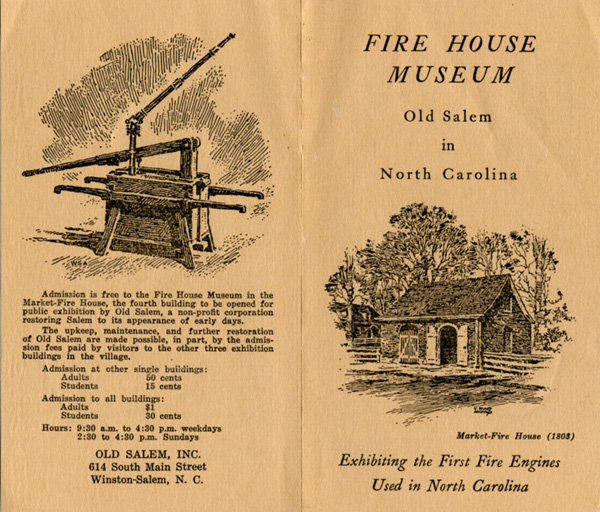
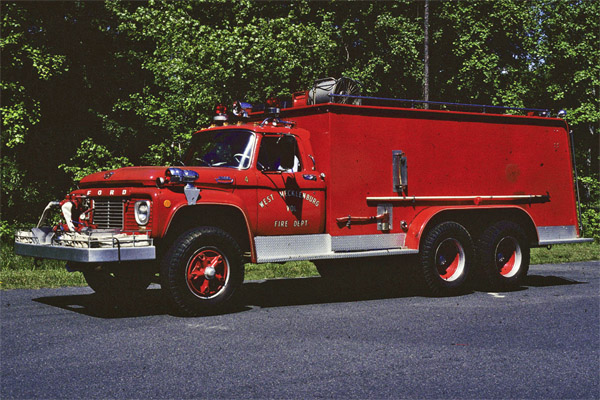
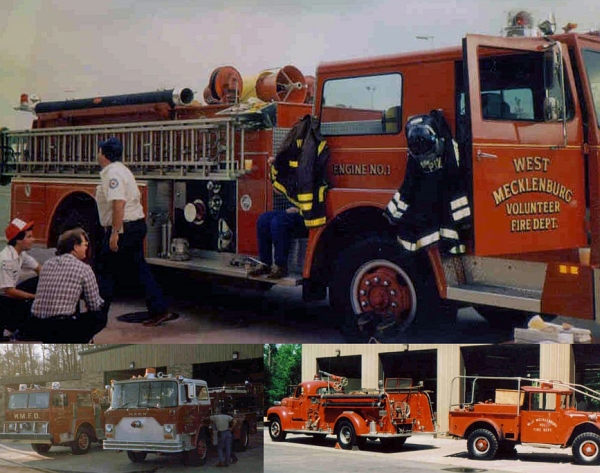
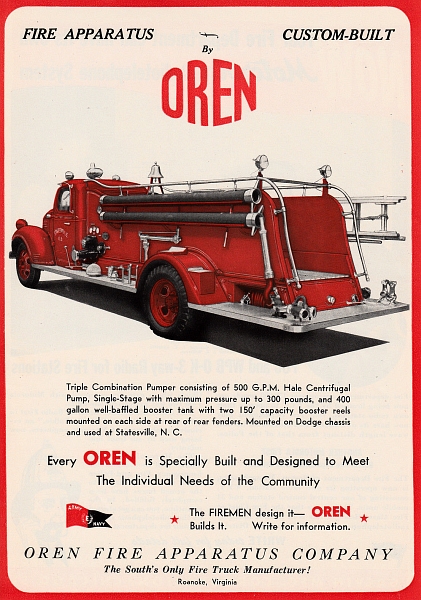
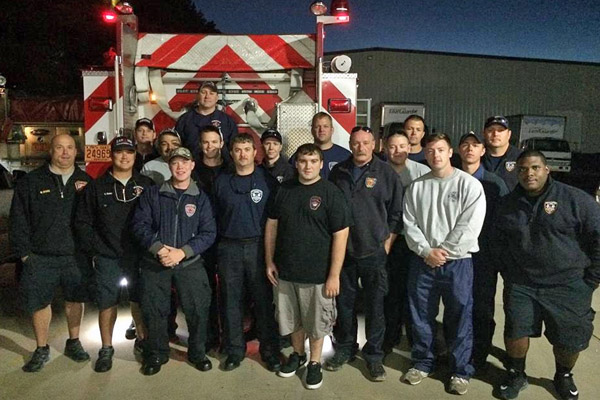
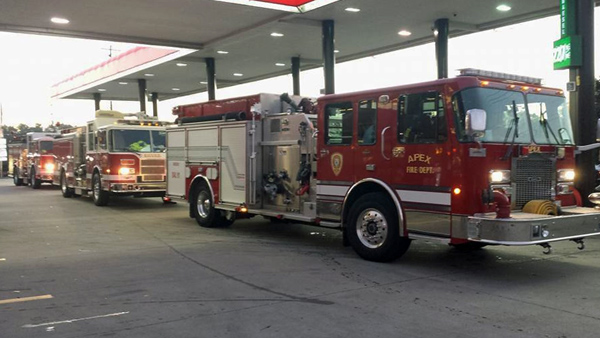
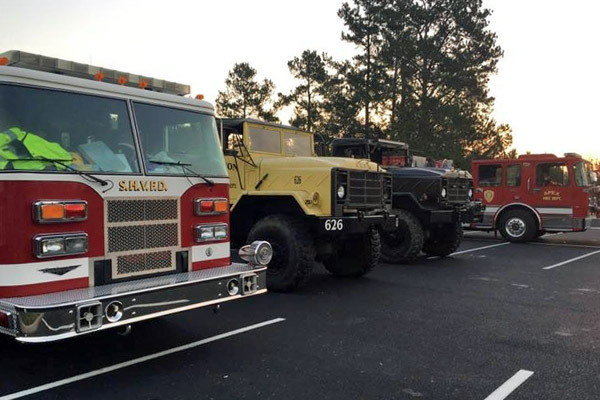
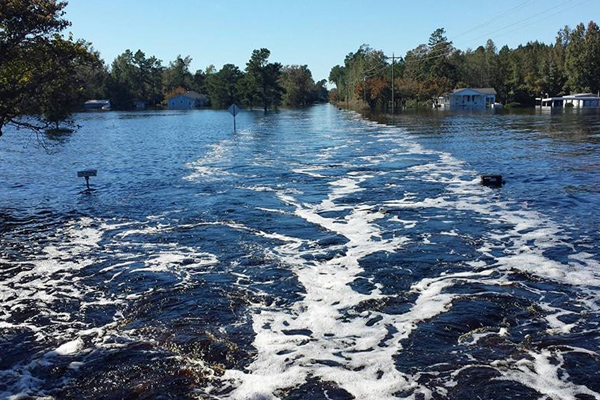
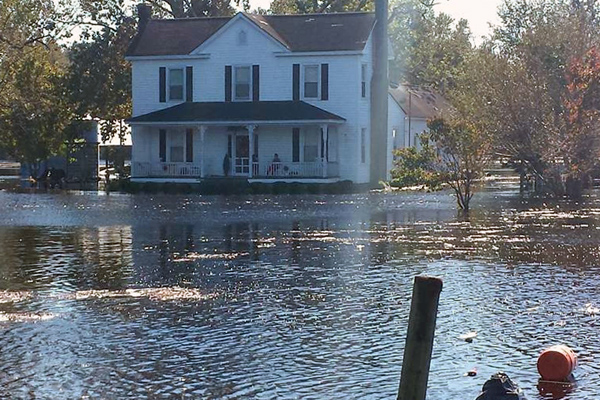
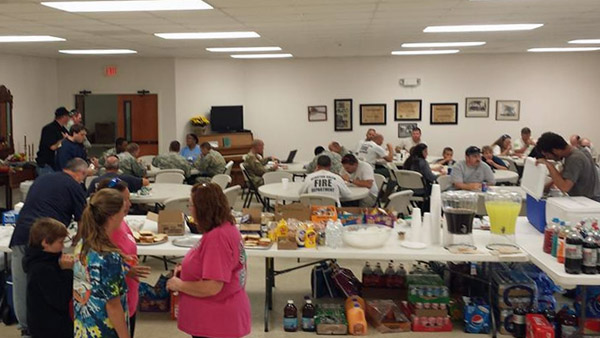
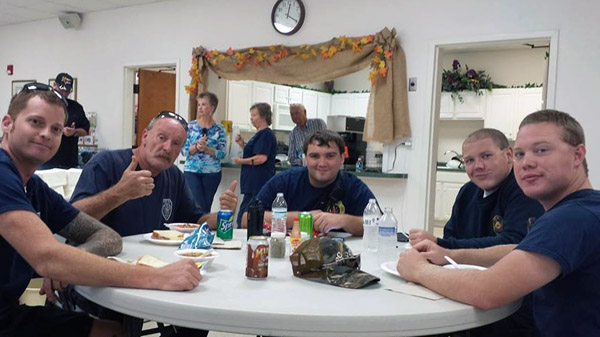

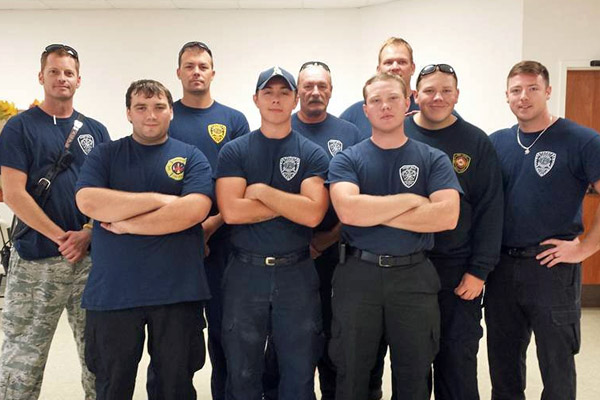
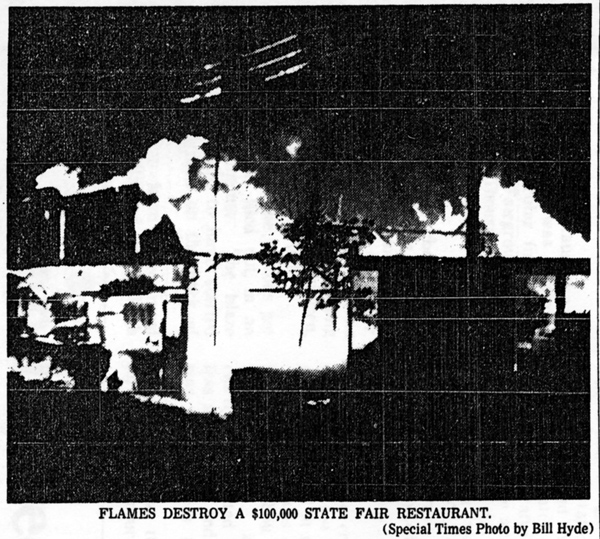
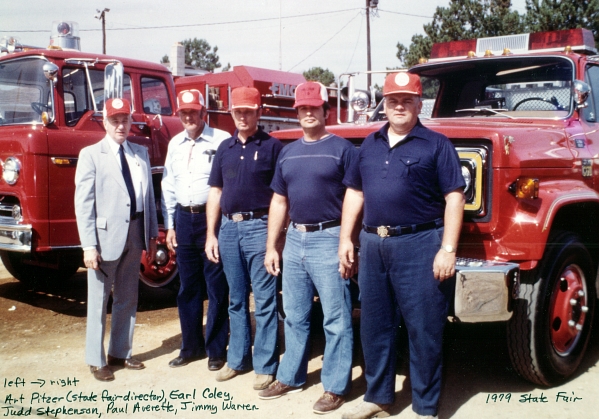
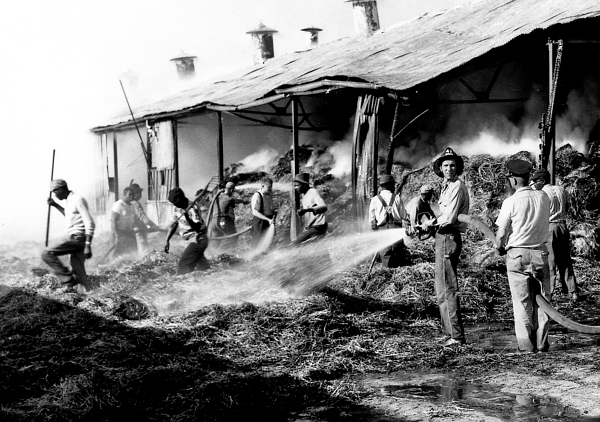 October 10, 1958 – Courtesy (Raleigh) News & Observer
October 10, 1958 – Courtesy (Raleigh) News & Observer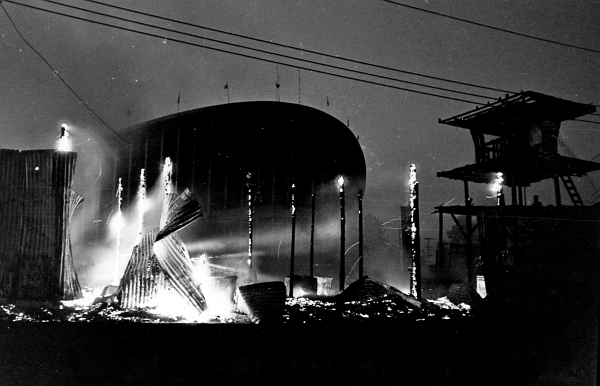 September 29, 1965 – Courtesy (Raleigh) News & Observer.
September 29, 1965 – Courtesy (Raleigh) News & Observer.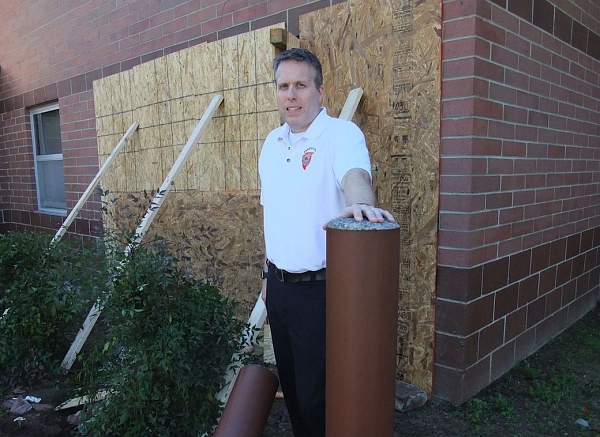 Herald-Sun photo
Herald-Sun photo